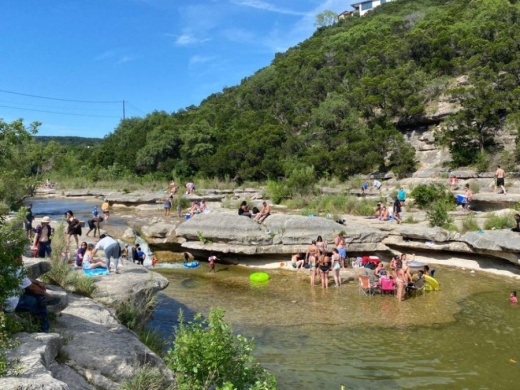A recent study conducted by a research team at The University of Texas Jackson School of Geosciences found municipal water sources, such as irrigation runoff or wastewater leakage, account for at least half of Bull Creek’s stream flow in some urban areas.
“Geochemical modeling results indicate that urban waters consist of 50%-95% municipal water,” the abstract for the study states.
The UT Austin research team has found a tracer isotope that allows research teams to identify water sourced from municipal runoff and leakage, according to Jay Banner, a professor in the Department of Geological Sciences at the Jackson School of Sciences.
Banner said this study has been in the works for the past handful of years and came on the heels of another study that looked at different water sources around the Austin area. The team decided to focus on Bull Creek to conduct this research due to the tributary’s range along rural and urban areas, Banner said.
The study found municipal water leakage, irrigation runoff and wastewater spillage all contribute to significant portions of stream flow in the parts of Bull Creek that run through heavily developed areas.
In the northeastern part of the Bull Creek watershed, development may allow for runoff to discharge more quickly into the stream instead of soaking into soil and getting integrated as groundwater.
“What we’re able to show in this study is the quality of that municipal water after it leaks and gets into the natural system,” Banner said. “The longer the water can spend underground before arriving at the creek, the more of a chance there is for the contaminants to be absorbed onto the walls of the aquifer. ... Groundwater tends to be higher water quality.”
Bull Creek in Northwest Austin remains a popular swimming hole destination for residents when the water level is high. This new study suggests that in some parts of the creek, much of the water at any point in time can come from irrigation or wastewater runoff.
In October, a weekend manhole overflow caused approximately 25,000 gallons of sewage to pollute Bull Creek.
“I’m not a public health expert. ... If you want to take the most conservative approach, don't go in [to Bull Creek]. If you do go in, don’t take water into your nose and mouth, don’t have open cuts and practice social distancing,” Banner said.
Banner said he and other researchers at the Jackson School of Geosciences are continuing to build off this research on other waterways in Austin, though the next study may not come for “a couple of years.” This study will look at how infrastructure has failed over previous decades.
“One of the key things we’re looking at is, 'How do we track the leaking of this infrastructure over time?” Banner said.





